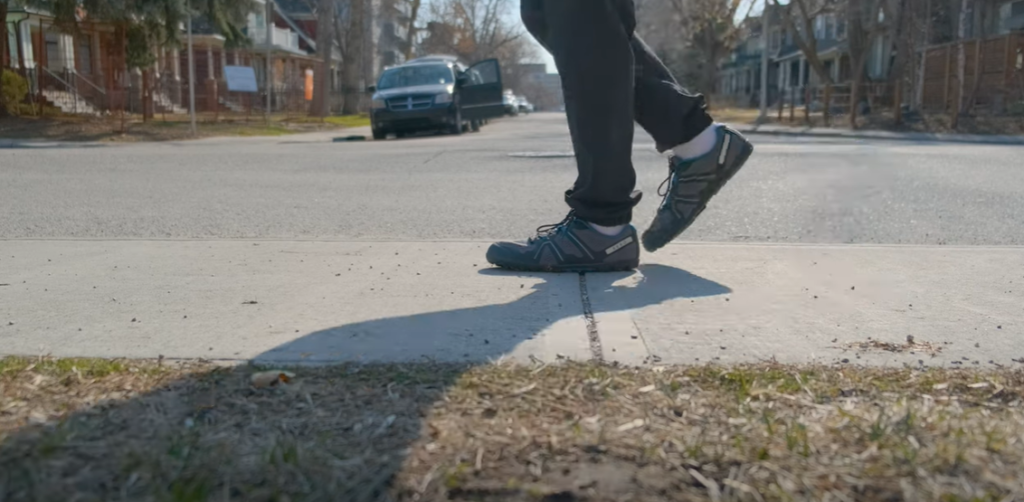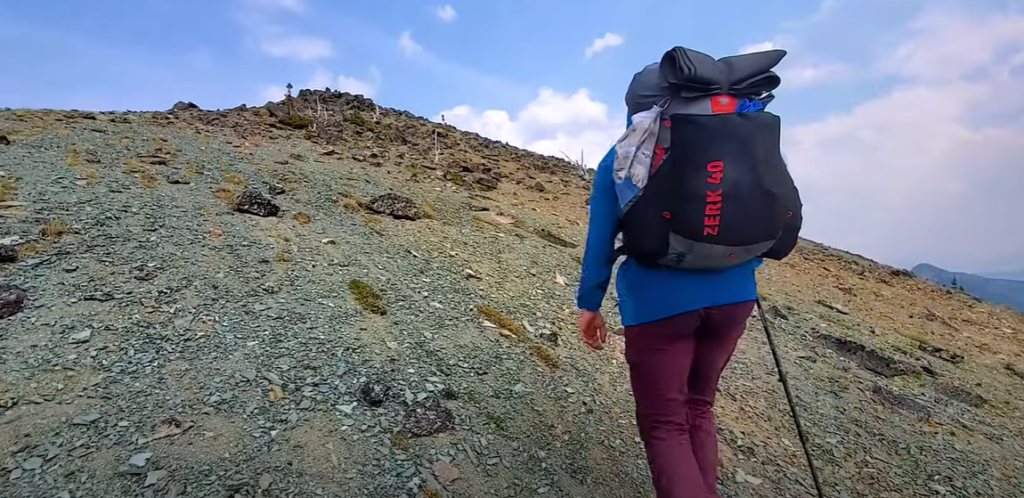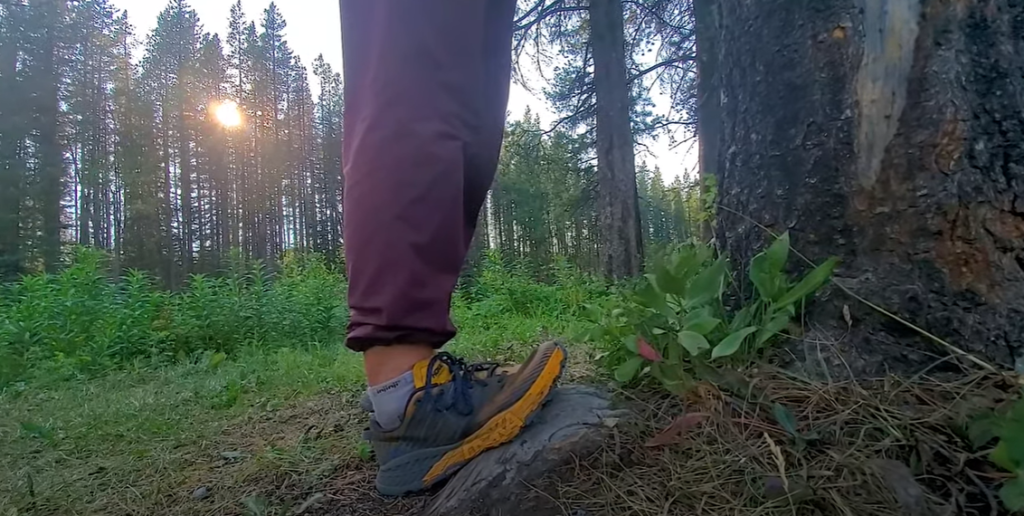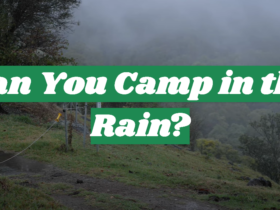Embarking on a hike can be an exhilarating and awe-inspiring experience, offering a refreshing escape from the mundane routines of daily life. But what happens when you lace up your boots, grab your backpack, and set out to conquer a six-mile trail? Prepare to be pleasantly surprised by the surprising length of a six-mile hike, an adventure that will challenge both your physical endurance and mental stamina. This article will dive into the intriguing question of how long it takes to complete a six-mile hike, uncovering the factors that can influence your pace and ultimately determine whether you’ll beat the clock or succumb to the demands of the trail. So, tighten those shoelaces and join this memorable journey as this article will explore the incredible world of hiking.
How to calculate hiking time?
One of the most common questions hikers have before embarking on a new trail is how long it will take them to complete it. The answer to this question depends on several factors, such as the distance and elevation gain of the trail, your fitness level, weather conditions, and rest breaks.

To calculate hiking time accurately, there are a few steps you can follow:
- Estimate your hiking pace
Your hiking pace is the average speed at which you walk on a trail. It is usually measured in miles per hour (mph) or kilometers per hour (km/h). To determine your hiking pace, you can do a simple test by walking on flat terrain for one hour and measuring the distance you covered.
For example, if you walked 3 miles in one hour, your hiking pace would be 3 mph. Keep in mind that your hiking pace may vary depending on the terrain and conditions of the trail.
- Consider the distance and elevation gain
The next step is to estimate the distance and elevation gain of the trail you plan to hike. This information can usually be found on trail maps or online resources.
Distance is the length of the trail in miles or kilometers, while elevation gain is the total vertical distance you will climb on the trail. The steeper and longer the climb, the more time it will add to your overall hiking time.
- Factor in rest breaks
Rest breaks are essential during a hike as they allow you to catch your breath and rejuvenate your energy levels. However, they also add time to your overall hiking duration. On average, hikers take a 5-10 minute break for every hour of hiking.
If you plan on taking longer or more frequent breaks, make sure to factor them into your estimated hiking time.

- Adjust for weather conditions and terrain
Weather conditions and terrain can significantly impact the time it takes to complete a hike. For example, if the trail is muddy or rocky, you may need to slow down your pace and add more time to your estimated hiking duration. Similarly, if you are hiking in hot temperatures or high altitudes, it can also affect your speed and energy levels.
- Use an online hiking calculator
If you’re not confident in your calculations or want a more accurate estimate, you can use an online hiking calculator. These tools take into account all the factors mentioned above and provide you with a rough estimate of your hiking time.
Remember to always plan for uncertainties and give yourself some leeway in your estimated hiking time. It’s better to have extra time than not enough, especially if you’re new to hiking or unfamiliar with the trail. Overall, calculating hiking time may seem overwhelming at first, but with practice and experience, you’ll become better at estimating it [1].
Tips for a successful hike
In addition to knowing how to calculate your hiking time, there are certain tips that can help make your hike more enjoyable and successful.
- Plan and prepare
Before embarking on your hiking adventure, it is crucial to meticulously plan and prepare. Start by thoroughly researching the trail you intend to conquer, ensuring you have a clear understanding of its difficulty level, terrain, and any potential hazards. Take the time to check the weather forecast to anticipate any changes or challenges you might encounter along the way. When it comes to packing, don’t forget to bring essential items such as an ample water supply, energy-boosting snacks, a well-equipped first-aid kit, and appropriate clothing and footwear. Lastly, it is always a good idea to inform a trusted person about your hiking plans, providing them with details of your intended route and estimated return time. By taking these meticulous steps, you can ensure a safe and enjoyable hiking experience.
- Start early
It is always advisable to start your hike in the early morning when you have ample daylight hours ahead of you. Beginning your hike at this time not only ensures that you can make the most of the daylight, but it also allows you to avoid the intense midday heat and the potential for afternoon storms that may arise. By starting your hike in the morning, you can set yourself up for a more comfortable and enjoyable outdoor adventure.

- Pace yourself
When embarking on a hike, it is important to resist the temptation of starting with a fast pace. Doing so can result in burnout and exhaustion later on, potentially hindering your overall experience. Instead, opt for a steady and comfortable pace throughout the trail, allowing you to fully immerse yourself in the surrounding nature, appreciate the scenic views, and savor each step of your journey. By maintaining a balanced rhythm, you’ll not only conserve your energy but also ensure a more enjoyable and fulfilling hiking adventure.
- Stay hydrated and fueled
Proper hydration and nutrition are absolutely crucial during a challenging hike, especially when you find yourself exerting for an extended period of time. To ensure you stay at the top of your game, make it a priority to drink water regularly, allowing your body to stay hydrated and maintain optimal performance. Additionally, don’t forget to pack energy-rich snacks that will not only satisfy your taste buds but also provide the necessary fuel to keep your energy levels high throughout the entire adventure. By taking care of your body’s needs, you’ll be able to fully enjoy the beauty of nature while conquering those magnificent trails!
- Take breaks
As mentioned earlier, taking rest breaks during a hike is crucial for both physical and mental well-being. These breaks provide an opportunity to catch your breath, rehydrate, and refuel your body with nourishing snacks or meals. Not only does this allow you to replenish your energy levels, but it also gives you a chance to appreciate the surrounding nature, observe wildlife, and fully immerse yourself in the hiking experience. So, make the most of these rest breaks by taking a moment to connect with your surroundings, reflect on your journey, and prepare yourself for the next leg of the trail. Remember, hiking is not just about reaching the destination, but also about enjoying the entire process along the way.
- Be aware of your surroundings
When you’re hiking alone, it’s crucial to always be conscious of your surroundings. Take the time to carefully observe your environment and stay vigilant. Keep a keen eye out for trail markers and landmarks along the way to ensure you stay on the right path and avoid any potential detours or confusion. By paying attention to these details, you can have a safer and more enjoyable hiking experience [2].

How Many Calories Do You Burn Hiking 6 Miles?
Hiking is a great way to stay active and explore nature. Not only does it provide physical exercise, but it can also be mentally refreshing. One factor that many people consider when choosing a hiking trail is the distance they will hike. For some hikers, the longer the trail, the better.
If you are planning on hiking 6 miles, you may be wondering how many calories you will burn during your excursion. While the exact number of calories burned depends on factors such as weight, speed, and terrain, there are some general guidelines that can give you an idea [3].
Calories Burned Per Mile
On average, a person burns about 100 calories per mile hiked. This means that if you were to hike 6 miles, you would burn around 600 calories. However, this number can vary significantly depending on the factors mentioned above.
For example, if you are carrying a heavy backpack or hiking at a faster pace, you may burn more calories per mile. On the other hand, if you are hiking on flat terrain and taking frequent breaks, you may burn fewer calories.
Terrain’s Impact on Calories Burned
The terrain you are hiking on can also have a significant impact on the number of calories burned. Hiking uphill or on rough, uneven terrain requires more energy and thus burns more calories compared to hiking on flat ground.
For every 10% increase in incline, the number of calories burned per mile increases by about 20%. Additionally, walking over obstacles such as tree roots, rocks, and streams can increase the number of calories burned by engaging different muscles and requiring more effort.
Factors Affecting Calories Burned
As mentioned earlier, factors such as weight and speed play a role in the number of calories burned while hiking. Generally speaking, people who weigh more will burn more calories than those who weigh less while hiking the same distance.
Similarly, hiking at a faster pace will also result in more calories burned due to the increased effort and energy required. However, it is essential to listen to your body and not push yourself beyond your limits, as overexertion can lead to injury.
How Much Water Should You Bring For A 6-Mile Hike?
When preparing for a 6-mile hike, one of the most important considerations is how much water to bring. Depending on factors such as weather conditions and individual hydration needs, the amount of water required can vary. However, there are some general guidelines that can help you determine the right amount to pack.
Firstly, it’s important to understand that staying hydrated while hiking is crucial for both your physical and mental well-being. Dehydration can lead to fatigue, muscle cramps, dizziness, and other uncomfortable symptoms that can affect your overall hiking experience.
Factors To Consider
As mentioned before, there are several factors that can influence how much water you need to bring on a 6-mile hike. These include:
- Weather conditions: Hotter temperatures and higher humidity levels will cause you to sweat more, increasing the amount of water you need to replace.
- Terrain: A hike that involves steep inclines or rugged terrain will be more physically demanding and require more water consumption.
- Personal hydration needs: Each person’s body is different, and some may require more fluids than others to stay properly hydrated.

General Guidelines
As a general rule, it’s recommended to bring at least 2 liters of water for a 6-mile hike. This amount can vary depending on the factors mentioned above and your personal preferences. For example, if you tend to sweat more or are hiking in hot weather, you may want to bring closer to 3 liters of water.
It’s also important to consider the duration of your hike. If you’re planning to be out on the trail for several hours, it’s always better to err on the side of caution and bring more water than you think you’ll need.
Tips For Staying Hydrated
Aside from bringing enough water, there are other ways you can stay hydrated during a 6-mile hike:
- Drink water regularly: Don’t wait until you feel thirsty to start drinking. Set a timer on your phone or watch to remind yourself to take sips of water every 15-20 minutes.
- Snack on hydrating foods: Fruits and vegetables with high water content, such as watermelon, cucumber, and celery, can help replenish your fluids while providing essential nutrients.
- Consider electrolyte replacement: If you’ll be hiking for longer periods and sweating a lot, it’s important to replace not only water but also essential electrolytes like sodium and potassium. Sports drinks or electrolyte tablets can help with this.
In conclusion, when preparing for a 6-mile hike, it’s crucial to consider how much water you’ll need to stay hydrated and comfortable on the trail. By taking into account factors such as weather conditions and personal hydration needs, following general guidelines, and implementing tips for staying hydrated, you can ensure a successful and enjoyable hiking experience.
What Things Can Slow Your Hike Down
Temperature
One of the things that can slow down your hike is the temperature. Whether it’s too hot or too cold, extreme temperatures can have a significant impact on your speed and endurance while hiking. In warmer weather, you may find yourself taking more breaks to rest and cool down, and in colder weather, you may need to take extra time to put on or take off layers of clothing. Additionally, if you are not properly dressed for the temperature, you could be at risk for hypothermia or heat exhaustion, both of which can severely impact your ability to continue hiking.
Altitude
Another factor that can affect your speed and endurance while hiking is altitude. As you climb higher in elevation, the air becomes thinner and contains less oxygen, making it more difficult for your body to function properly. This can lead to fatigue, shortness of breath, and other symptoms that can slow you down on the trail. It’s important to acclimate properly when hiking at high altitudes and take breaks as needed to allow your body to adjust.
Weather
In addition to temperature and altitude, weather conditions can also play a major role in how quickly you are able to hike. Rain and strong winds can make the trail slippery and difficult to navigate, while snow and ice can create hazardous conditions. It’s important to always check the weather forecast before heading out on a hike and be prepared for any potential changes in weather. You may need to adjust your pace or even turn back if weather conditions become too severe.
Trail Conditions
The condition of the trail itself can also greatly impact your hiking speed. Steep, rocky terrain or uneven surfaces can slow you down and require more effort to navigate. Wet or muddy trails can be slick and make it difficult to maintain a steady pace. Additionally, obstacles such as fallen trees or overgrowth can slow you down and may even require you to backtrack or find an alternate route. It’s important to always be aware of the trail conditions and adjust your speed accordingly.
Elevation Gain
The amount of elevation gain on a hike can also affect your speed and endurance. The steeper the incline, the more effort it takes to climb, which can greatly decrease your pace. Additionally, if you are not used to hiking at higher elevations, the change in altitude can impact your performance as well. It’s important to be aware of the elevation gain on a hike and plan accordingly by taking breaks, pacing yourself, and staying hydrated.
FAQ
How long does it take to hike 5 miles?
The time it takes to hike 5 miles depends on various factors, such as the difficulty of the terrain, your physical fitness, and whether you are carrying a backpack. On average, it can take anywhere from 1.5 to 2.5 hours for an experienced hiker to complete a 5-mile hike. However, if you are new to hiking or the trail is particularly challenging, it may take longer. It’s always a good idea to plan for extra time when embarking on a hike.
What should I pack for a day hike?
When preparing for a day hike, it’s important to bring essential items such as plenty of water, snacks, appropriate clothing and footwear, navigation tools (map and compass), first aid kit, and a fully charged phone. Other useful items to pack include sunscreen, bug spray, a hat, and sunglasses. It’s also advisable to check the weather forecast and pack accordingly.
What is the best time of year for hiking?
The best time of year for hiking varies depending on location. Generally, spring and fall are the most popular seasons as they offer pleasant temperatures and beautiful scenery. However, summer can be a great time for high altitude hikes, while winter offers unique experiences such as snowshoeing or cross-country skiing. It’s crucial to research the climate and trail conditions of your desired hiking destination before planning your trip.
Useful Video: Do These 3 Things to Hike 20 Miles EASY // Training Tips for Hiking & Backpacking
Conclusion Paragraph
So, to hike 6 miles you should start by getting some proper hiking gear and equipment. This includes good quality hiking boots, a backpack that fits you well, and clothing appropriate for the weather conditions. You should also make sure to bring plenty of water and snacks to keep yourself hydrated and energized throughout the hike. This hiking trip can take anywhere from 2-3 hours to complete, so it is important to pace yourself and take breaks when needed. Remember to always stay on designated trails and follow any signs or rules in the area to ensure your safety.
References:
- https://adventurenerds.com/article/hiking-time-calculator-and-how-to-estimate-hiking-time/
- https://www.eehealth.org/blog/2020/11/take-a-hike-8-tips-for-a-successful-hike/
- https://caloriesburnedhq.com/calories-burned-hiking/










Leave a Review